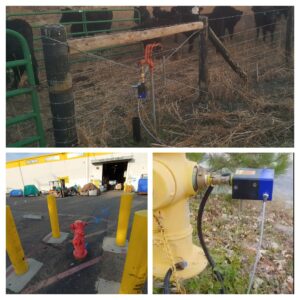
Plastic
water line locating is no easy feat. Plastic water lines are non-conductive and
about as electrically interesting as dirt. These plastic-based pipes have
evaded the grasp of many noble locators throughout the years.
This is a problem because, since the eighties, most new water pipes have been made of non-metal, non-conductive plastic. So how exactly do you find water lines underground? Read on for all the details.
How to Locate a Water Line: A Look at Basic Water Line Locating
Buried
water utilities are broken into two categories: potable (a.k.a. drinkable)
lines and irrigation (a.k.a. reclaimed water, non-drinkable) lines.
These water lines can be made from the following materials:
- Galvanized Steel: Steel is rarely used
for water lines, especially in residential properties, because it’s expensive,
heavy, and prone to rust and corrosion. But some commercial properties still
invest in steel pipes. These types of lines are usually locatable using
traditional locating techniques including GPR (ground penetrating radar).
- Copper: Copper used to be really
popular in the late twentieth century, but it was too pricey to compete with
the alternatives on the market (like plastic). As with steel, locators can
typically find these pipes using traditional techniques like GPR, locating wands,
and acoustic locating.
- Plastic: Plastic water lines
include the incredibly popular PEX and PVC pipes, and more. Unlike galvanized
steel and copper, plastic water locating can’t be done effectively using
traditional methods.
- Asbestos Cement (or Transite): Yeah, that asbestos. Starting in the 1930s, the U.S. began using asbestos cement pipes because it was lightweight and corrosion-resistant. Of course, now we know that asbestos can be really dangerous, especially if it’s leaked into the water supply. There are still thousands of miles of asbestos-based piping in the U.S., and it’s all beginning to reach its expiration. This means that these pipes are beginning to burst, corrode, or break down. Like plastic, you can’t locate asbestos cement (AC) pipes using traditional means.
Generally, locating water lines involves GPR. This technique
is largely ineffective for locating plastic water lines (or AC lines), though –
for two main reasons:
- Water lines are buried deep in the ground to prevent freezing, so
they’re harder to detect - Plastic isn’t conductive, meaning radar can’t easily find them
Ground-penetrating radar (GPR) simply isn’t designed to
locate deep, small-diameter, plastic or non-conductive lines of any kind.
If you’re a studious locator, you might say, “Well, if I
can’t use GPR, what about a pipe locating wand?” While there’s merit to your
thinking, a pipe locating wand will only work if there is a tracer wire buried
with the line – which is basically never. (But bless those few contractors out
there who actually do take the time to bury one!)
So, what’s the secret to plastic water line locating? Drumroll, please… it’s acoustic locating.
How to Find Water Lines Underground: Acoustic Locating to the Rescue
When other non-destructive testing (NDT) tools fail,
acoustic locating emerges as the true hero. We’re big fans of acoustic locating
because it can work on any pipe, regardless of the material.
The acoustic locators that we use at Enhanced Scanning send
an acoustic wave through the waterline. This increases the line’s pressure by
approximately two psi, with a pulse wave generator (PWG) attached to a
pressurized hose bib, hydrant, faucet, or other water sources on the line.
Then, we use a digital processing unit, noise-canceling
headphones, and a geophone to listen for the sound of the pulsing water
underground.
No bones about it. Acoustic locating is a tedious process. But using a pulse wave generator (PWG) for this process has proven very effective at finding those otherwise unfindable plastic and asbestos cement pipes.
Many utility locate companies only try to use GPR to locate plastic water lines, which sometimes works. At best, this is extremely difficult. At worst, it’s impossible. It’s kind of like playing whack-a-mole and just whacking on all the holes because you know a mole might come through one. It’s inconsistent and unreliable. If you want reliable plastic water line locating, drop us a line at contact@enhancedscanning.com.